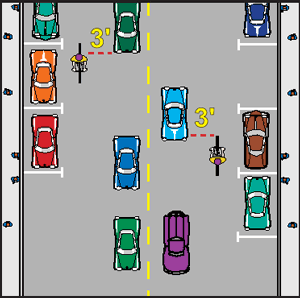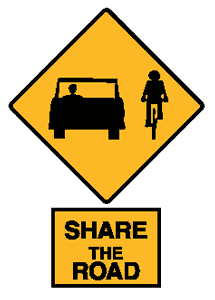|
Sharing Roads How to drive safely |
|
Bicyclists and drivers share the same roads and must obey the same traffic laws. There are major differences between the vehicles, however, and obviously, bikers are far more vulnerable. Also, cyclists have to balance to ride, can't stop as quickly as cars and are affected more by potholes, gravel, railroad crossings, oil and other vehicles. These conditions force sudden and unpredictable moves.
For these reasons, it's important to always approach cyclists carefully. To be safe, slow down and don't attempt to pass until there's plenty of room to do so safely. Move well to the left if you need to pass, or wait for the cyclist to yield if necessary. Here are five guidelines for safe driving around cyclists:
1. Drive cautiously
2. Yield
3. Be considerate
 |
4. Pass carefully |
5. Watch for children
Graphics courtesy of CDOT Bicycle/Pedestrian Program

